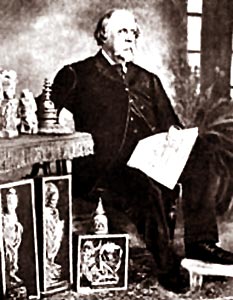 History of Archaeological Survey of India (ASI) has witnessed able administration starting from Sir Alexander Cunningham. It was set up in order to protect India`s ancient and medieval monuments and art objects of archaeological, historical interests. The exploration and excavation of ancient sites; the discovery and decryption of inscriptions; establishment and maintenance of site museums come under their purview. Even the maintenance of archaeological gardens around monuments, archaeological sites and remains; the chemical preservation of monuments and antiquities; the promotion of specialized studies in various branches of archaeology is a part of their responsibility. The architectural survey of secular and religious buildings; studies on different aspects of archaeology both in India and abroad; and publication of authoritative literature also come under the purview of this organization.
History of Archaeological Survey of India (ASI) has witnessed able administration starting from Sir Alexander Cunningham. It was set up in order to protect India`s ancient and medieval monuments and art objects of archaeological, historical interests. The exploration and excavation of ancient sites; the discovery and decryption of inscriptions; establishment and maintenance of site museums come under their purview. Even the maintenance of archaeological gardens around monuments, archaeological sites and remains; the chemical preservation of monuments and antiquities; the promotion of specialized studies in various branches of archaeology is a part of their responsibility. The architectural survey of secular and religious buildings; studies on different aspects of archaeology both in India and abroad; and publication of authoritative literature also come under the purview of this organization.
Archaeology as a subject of scientific study began only in the 1840s. The Industrial revolution had given a great boost to the study of field geology and archaeology. The establishment of ASI was preceded by the Asiatic Society. In November 1861, Alexander Cunningham, a Colonel of the Royal Engineers had addressed a long message to Canning thereby pleading him to institute a careful and systematic investigation of the existing monuments of ancient India through a professional organization. On 1st December 1861 Alexander Cunningham was appointed as the Archaeological Surveyor that marked the birth of this organization. Cunningham was succeeded by James Burgess whose efforts led to passing of Government directives prohibiting any person or agency to undertake digging without consent of the ASI.
The appointment of Lord Curzon as the Viceroy of India marked a new era in ASI. The performance of the Ancient Monuments Preservation Act, 1904, is a milestone in the history of archaeology in India. Immense volume of work was accomplished by the ASI during the tenure of John Marshall as it had made huge contribution in the field of excavation.
Marshall was also accountable for setting up a number of museums including site museums at Taxila, Mohenjo-Daro, Harappa, Sarnath, Nalanda and pagan. He was involved in establishing Central Archaeological Library; the initiation of the Annual Reports of the Archaeological Survey of India and of the chronicle of the officers; documentation of photographs; written by ASI officers.
The first Indian to occupy this position was Daya Ram Sahni in 1931. In 1944 Mortimer Wheeler was appointed who centralized the conservation work which was to be carried out by the Survey itself. In 1945, a Central Advisory Board of Archaeology for the purpose of reviewing and advising the Central Government in Archaeological matters was established. Post Indian Independence opened the School of Archaeology.



















